STOLPERSTEINE GELSENKIRCHEN
Ausgrenzung erinnern

|
HERE LIVED
 DAVID LÖWENSTEIN DAVID LÖWENSTEIN
BORN 1878
ESCAPED 1941
PORTUGAL
1941 USA
|
HERE LIVED
 BERTA LÖWENSTEIN BERTA LÖWENSTEIN
NEE KATZENSTEIN
BORN 1877
ESCAPED 1941
PORTUGAL
1941 USA
|
|
HERE LIVED
 KURT LÖWENSTEIN KURT LÖWENSTEIN
BORN 1908
ESCAPED 1939
ENGLAND
1940 USA
|
HERE LIVED
 DR. WERNER LEO LÖWENSTEIN DR. WERNER LEO LÖWENSTEIN
BORN 1909
ESCAPED 1937
USA
|
Stumbling Stones installed at: Horster Str. 17, Gelsenkirchen
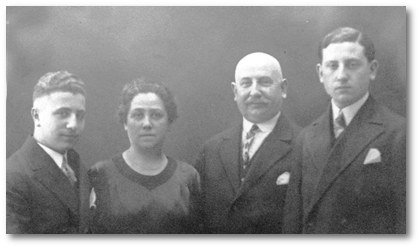
Fig. 1: The Löwenstein family, Gelsenkirchen. From left to right: Werner, Berta, David and Kurt Löwenstein
The retailer David Löwenstein, born in Brilon on 2nd of September, 1878
as the son of the salesman Levi Löwenstein and his wife Johanna, née Willon (1) was married to
Berta Katzenstein, born in Abterode on 11th of October, 1877. When exactly the Löwensteins moved
to Buer is unproved. The couple had two sons, both born in Buer, Westphalia which was still an
independent town at that time: Kurt was born on 22nd of June, 1908 and Werner on 9th of October, 1909. Ancestors of the Löwensteins can be traced back to the 18th century.
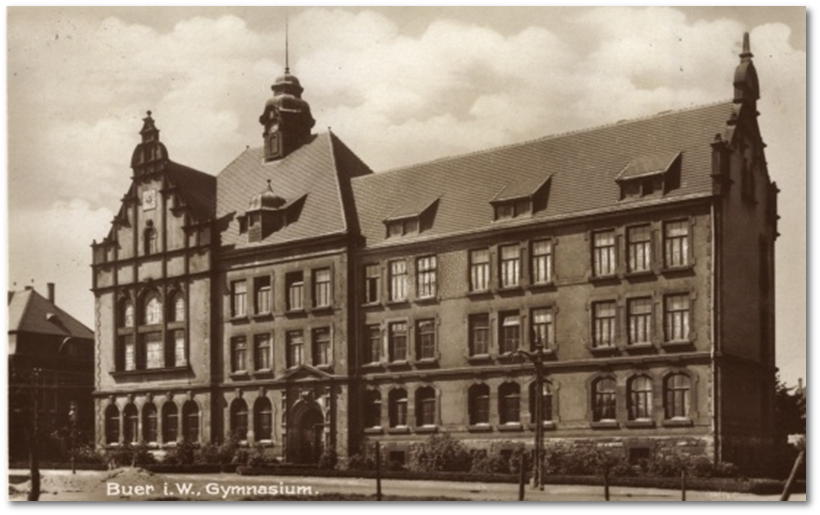
Fig. 2: Extension building of the local highschool, the „Hindenburg-Gymnasium“ in Buer, Breddestrasse, around 1934. Kurt was registered in 1918, Werner followed in 1919. Today, this building houses the Leibniz Gymnasium.
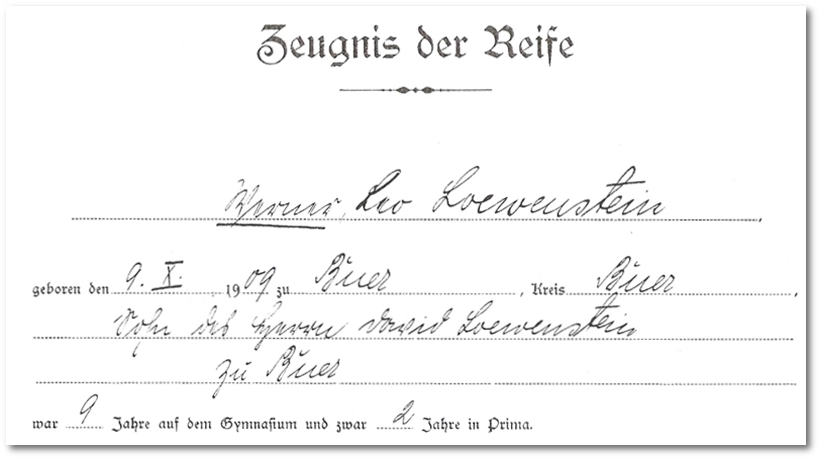
Fig. 3: Excerpt of the „Abitur“ certificate (qualification for university matriculation) of Werner Löwenstein
Both, Werner and Kurt graduated from „Hindenburg-Gymnasium“, Buer, which today carries the name of „Max-Planck-Gymnasium“, Kurt passed his exams in 1927. In his Abitur certificate it is noted: 22nd of February, 1927 „Löwenstein intends to study law. Werner's highschool graduation certificate („Reifezeugnis“) shows the note: „Löwenstein will study medical science“.
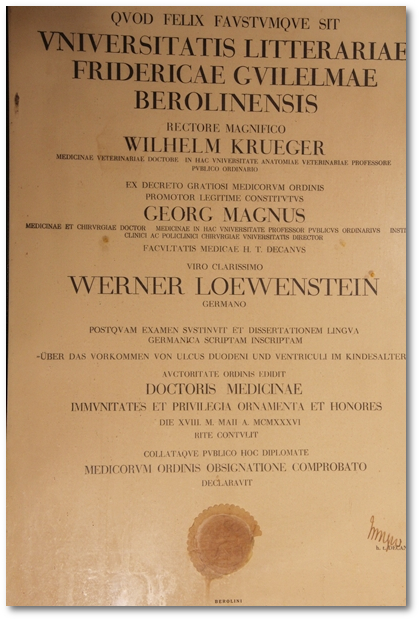
Fig. 4: doctorial certificate of Werner Löwenstein, M.D. Theme of his doctorial dissertation: „The clinical picture and disease state of ulcus duodeni and ventriculi in infancy“
In 1934, the last year during which Jewish students were permitted to graduate from university in Nazi Germany, Werner Löwenstein got his Medicine graduation from the „Friedrich-Wilhelm-Universität“ in Berlin. He was already warned not to attend the graduation ceremony. On top of this he was not permitted to receive his certificate. A professor, who obviously liked Werner, got the certificate from the podium during the ceremony and handed it to Werner personally some time after.
Following a decree launched in January 1934 it was interdicted to confer a doctorate on a „Nichtarier“(non-aryan) except for just a few individual cases . In the year of the proclamation of the „Nürnberger Rassegesetze“(Nuremberg race laws) the admission to a board certification examination and the approbation required the presention of a proof of Aryan ancestry. Thus Werner never got his approbation.
His doctor's degree was the only document that Werner took with him when he fled Nazi Germany,
in the end his academical degree as a medical doctor was a symbolic ticket to the free world. During all his lifetime, education was of great value to Werner Löwenstein. „Education is something that nobody can take away from you.“he would say. He passed this sense of value to his three children and six grandchildren – all of them having acquired university degrees.
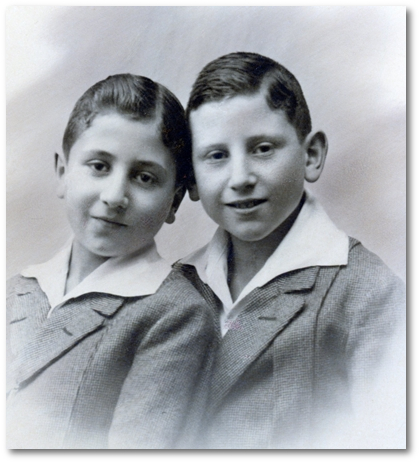
Fig.5: Werner (left) and Kurt Löwenstein, Gelsenkirchen
Living in the false hope after the handover of power in 1933 that Jewish persons could continue to live in fairly normal conditions and circumstances, Berta Löwenstein had to realize the signs of the time when the daily anti-jewish terror became worse and worse.
It was decided that her sons were to escape to the United States. A remote relative in Ohio agreed to sign for a corresponding guarantee to pay for all living costs („Affidavit of support“) for Werner. She was of the opinion that Werner, the doctor, would be in a position to cater for himself. In the case of Kurt, who in the first half of the 1930ies could complete law school, before from the 22nd of July, 1934 onwards jewish students were banned from all examinations, she claimed that due to the language barrier alone it would be too difficult for him to cope and refused to sign for him and support him. On the 16th of April, 1937 Werner reached Ellie Eisland/USA on board of SS Manhattan. Werner Löwenstein succeeded in finding an employment in the US comparatively quickly. He worked as a medical doctor in St. Elizabeths Hospital in Lafayette, Indiana. After 12 months he changed to a different hospital in Terre Haute, Indiana.
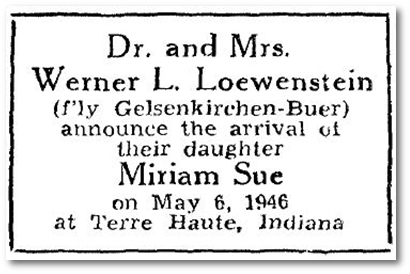
It was there that he met his wife-to-be Hazel Anderson. Hazel converted to judaism before they got married on 4th of June, 1942. On the 6th of May, 1946 their daughter Miriam Sue was born. Both, Werner and Kurt joined the US army and took an active part in the relief from fascism, Werner as a soldier in the Army and Kurt fighting in the Navy. Werner Löwenstein died on 6th of February 1990 in the presence of his family. Biography of Werner Leo Löwenstein, M.D by Miriam (Löwenstein) Zimmerman: PDF download click here.
Kurt Löwenstein married when he still lived in Germany. On the 10th of July, 1938 he married Guste née Zwecher. On 18th of January he initially escaped to the Netherlands, from there he fled to England in August 1939. His wife followed him shortly after, It was only after a one year's stay in the GB that they emigrated to the States.
|
|
|
Until their expropriation, displacement and escape David and Berta ran a prosperous business in the heart of Buer in Essener Straße 12a (today Horster Straße 17); a store spezializing on ladies' and men's hats as well as ties. The family lived in the appartment above the shop.
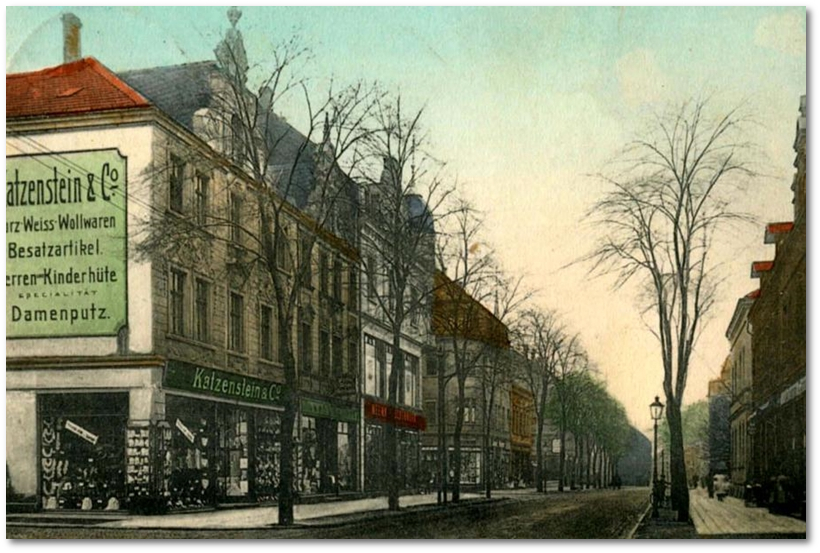
Fig. 6: Postcard approx. 1910/15, Essener Strasse corner Maelostrasse
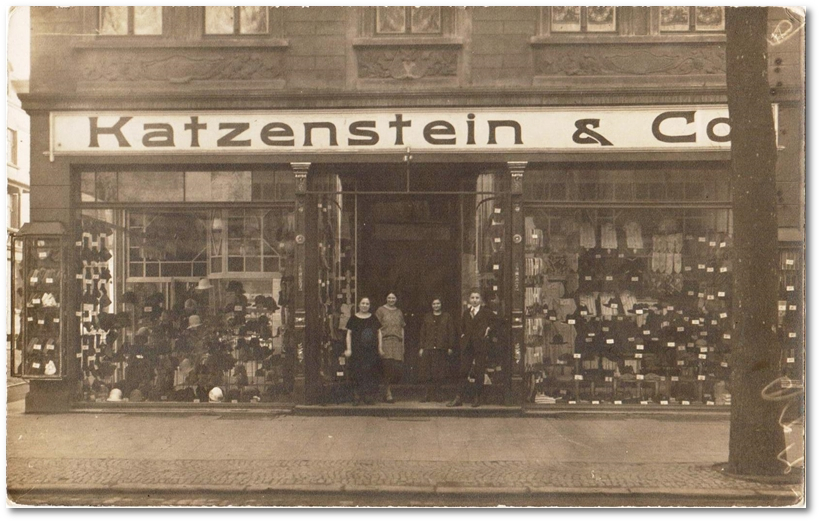
Fig.7: Retail store Katzenstein in Buer (in Essener Straße 12 a until Buer was incorporated into a bigger municipality; starting from 1934 the section between Vinckestraße and Goldbergstraße was called „Ludwig-Knickmannstraße, today: Horster Straße 17)
In the course of the so-called Aryanization („Arisierung“) - this is what the Nazis euphemizedly called the state-organized looting of jewish people, Otto Höfer, citizen of Buer, became the new „owner“ of the real property in Horster Straße 17. In an „announcement of a building project“ addressed to the employment agency of Gelsenkirchen it is said:
|
„Subject of this announcement is a commercial/residential building, that has been acquired by the applicant from a Jew,which is in such a state that an overhauling is absolutely exigent, as a usage at present is impossible. The estimated overall costs are so unreasonably high as shop windows, portal mirrors and eaves need to be replaced.“ The estimated execution time as per application was the 5th of June to the 17th of July, 1939. The announcement is dated 24th of May 1939, signed by Otto Höfer.[3]
|
Concealing facts, the term „acquired“ is used in the announcement, as if there had been a normal, correct and fair business transaction. This is absolutely not true. It is by all means possible that the „current state“ that Otto Höfer describes are the aftermaths of the Pogrom Night in 1938, a contemporary witness reports: „On the 10th of November there were signs of devastations all over Buer. In „Hoch- strasse“ (Highstreet of Buer with many shops) in front of the Hirsch trouser store, garments and destroyed mannequins were spread on the pavement. In the case of the Rosenbaum furniture store at the corner of Westerholter Straße/de-la-Chevalleriestraße, pieces of furniture like kitchen cabinets, tables, chairs, sofas had been thrown onto the streets. The shop windows of the shop of Katzenstein and Löwenstein, at the corner of Horster Straße/Maelostraße had also been demolished. The facades of the houses had been smeared all over with anti-jewish hate propaganda. There was no sign of the proprietors/owners – all of them had been arrested that night and put in prison at the local police building. Some of them were sent to concentration camps at a later stage. [4]
|
The only financial means that they had left to jewish people was money to cover their daily cost of living in order to save on national assistence funds: without any wages of job-related income this was a life on the breadline. Excerpts from a „Sicherheitsanordnung“ (a paper declaring that the jewish person could not dispose of his money/claims against other persons unless he got the permit from the bank) against David Löwenstein, dated 1939, who until December 1938 had disposed of real property in Brilon, depicts the aggravation of actions against the Jews. Money from „the sale“ of property could only be regarded as nominal sums in the hands of the jewish seller and was blocked to a large exent until emigration resp.the escape or deportation. The deprivation of citizenship linked to this paved the way for the confiscation of the property by the so-called „Dritte Reich“ (Third Reich).
Sicherheitsanordnung
Dortmund Nr. 30 15 1515.
Betr.: Maßnahmen gegen Juden
Aus gegebener Veranlassung weise ich darauf hin, daß von einer Sperrung jüdischer Bankkonten abzusehen ist. Ich ersuche jedoch, Geldinstitute bei denen Juden Kontos haben, anzuhalten, vor Abhebung größerer Beträge oder vor Auflösung umfangreicher Konten, jeweils die hiesige Entscheidung einzuholen.
Stapo Dortmund
Urschr. der Sparkasse und der Briloner Volksbank zur Kenntnisnahme
Herrn David Israel Löwenstein
Gelsenkirchen-Buer
Horsterstr. 17
Sicherungsanordnung!
Sie haben angegeben, daß Sie beabsichtigen auszuwandern. Es besteht die Gefahr, daß hierbei unter Umgehung oder Verletzung bestehender Vorschriften Vermögenswerte der Devisenbewirtschaftung entzogen werden. Auf Grund des § 59 des Devisengesetzes vom 12.12.1938 ordne ich daher an:
Die Verfügung über folgende Vermögenswerte ist nur mit meiner Genehmigung zulässig:
1. Ihre Forderung gegen die Stadt Brilon
2. Ihre Forderung gegen Wilhelm K., Brilon
3. Ihre Forderung gegen Otto Höfer, Gelsenkirchen-Buer
4. der zu treuen Händen bei Rechtsanwalt Niewoehner hinterlegte Betrag von RM 20.000
Ich genehmige hiermit Zahlungen auf die Forderungen 1-3 bezw. die Zahlung des Betrages zu 4 mit der Maßgabe, daß die Beträge nur auf ein Konto bei der Zweckverbandssparkasse Gelsenkirchen-Buer überwiesen werden dürfen. Über dieses Konto darf nur mit meiner Genehmigung verfügt werden. Erträgnisse gesperrter Depots, Zinsen gesperrter Konten, Zinsen aus Forderungen sowie Miet- und Pachteinnahmen verbleiben zu ihrer freien Verfügung.
Soweit diese Beträge zur Bestreitung des Lebensunterhaltes nicht ausreichen, kann bei mir Freigabe eines monatlichen Betrages aus einem gesperrten Konto beantragt werden. Zur Bestreitung Ihres Lebensunterhaltes gebe ich von dem gesperrten Konto bei Zweckverbandssparkasse Gelsenkirchen-Buer RM 700,— pro Monat frei. Die vorläufige Sicherungsanordnung der Zollfahndungsstelle Dortmund vom 16. Febr. 1939 wird durch diese Anordnung aufgehoben.
Abschrift: Im Auftrage: gez. Heising
Herrn Bürgermeister der Stadt Brilon, zur gefl. Kenntnis
|
It cost Werner a lot of endeavour and strength to finally persuade his parents to leave Nazi Germany. His father David Löwenstein refused to leave Germany, he was of the opinion that having been awarded the „Ehrenkreuz für Kriegsteilnehmer“ (medal for war participants) for having fought as a combatant in the German Army in the First World War, nothing could happen to him. He adhered to the opinion that he was safe. „it cannot become worse, I am a combatant – they will never do me any harm.“
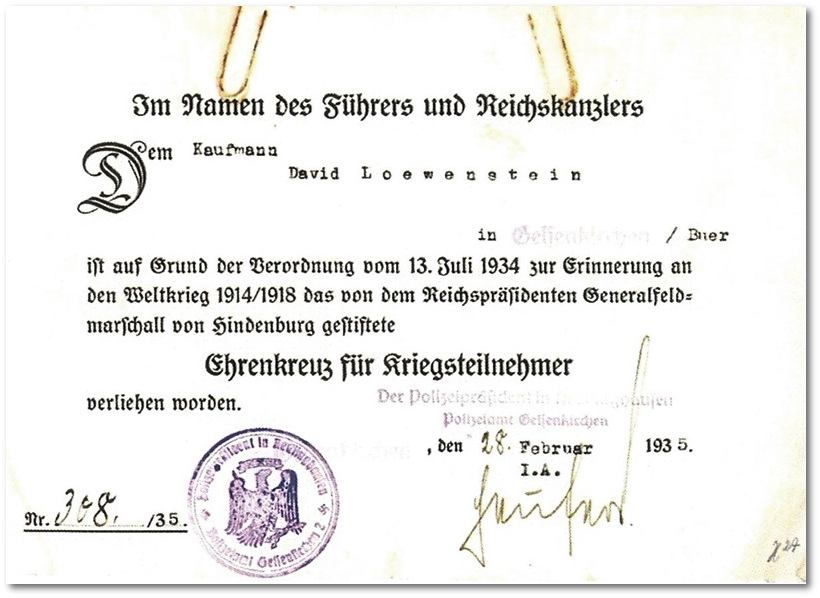
Fig. 8: In 1935 David Löwenstein was decorated with the "Ehrenkreuz für Kriegsteilnehmer" (medal for participants of the first World War)
And thus the first Visas, that Werner had taken so much pain to get hold of, expired. Only after the Pogrom Night in which also the store of the family had been destroyed, Berta and David Löwenstein decided to escape. This was literally last minute. They boarded the steamship „EXCALIBUR“( a luxury liner of the American Excort lines) in the port of Lisbon on the 28th of March, 1941. This ship took them to the United States where they sought shelter. David died on American soil on 27th of December, 1950, his wife Berta on 30th of September, 1953.
In the late fifties, Werner Löwenstein made an application for idemnification (Wiedergutmachung). In 1960 he was granted a sum of 120 Deutschmarks as a compensation for „emigration costs“.
Figures:
Abb.1: Miriam Zimmerman
Abb.2: Abiturzeugnis Werner Leo Löwenstein, Schularchiv MPG, Gelsenkirchen-Buer
Abb.3: Anzeige in der Exilzeitung "Der Aufbau" v. 7. Juni 1946
Abb.4,6: Ansichtskarte, Sammlung Karl-Heinz Weichelt
Abb.5,7,8: Familie Löwenstein/Zimmerman
Sources:
[1] Ursula Hesse: Jüdisches Leben in Alme, Altenbüren, Brilon, Madfeld, Messinghausen, Rösenbeck, Thülen. Stadt Brilon 1991
[2] Bericht v. Kurt Löwenstein, 1976
[3] Hausakte, StA/ISG Gelsenkirchen
[4] Die Novemberpogrome in Gelsenkirchen - Dokumente zur Reichskristallnacht. Herausgeber: Schul- und Kulturdezernat der Stadt Gelsenkirchen, Evangelischer Kirchenkreis Gelsenkirchen, Schulamt für die Stadt Gelsenkirchen, 1988.
International Tracing Service (ITS), Bad Arolsen
Sekundärliteratur: Biography of Werner Leo Löwenstein, M.D von Miriam (Löwenstein) Zimmerman. Mit freundlicher Genehmigung, alle Rechte vorbehalten.
Alfons Kenkmann, Bernd-A. Rusinek, Hgb.: Verfolgung und Verwaltung, Die wirtschaftliche Ausplünderung der Juden und die
westfälischen Finanzbehörden. Münster, 1999
Setting of Stolpersteine for the Löwenstein family, Mai 23rd 2018
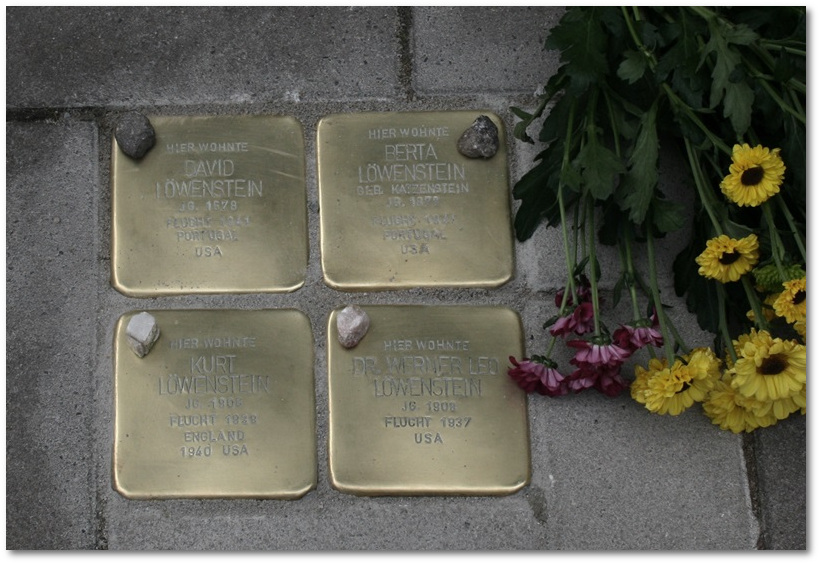
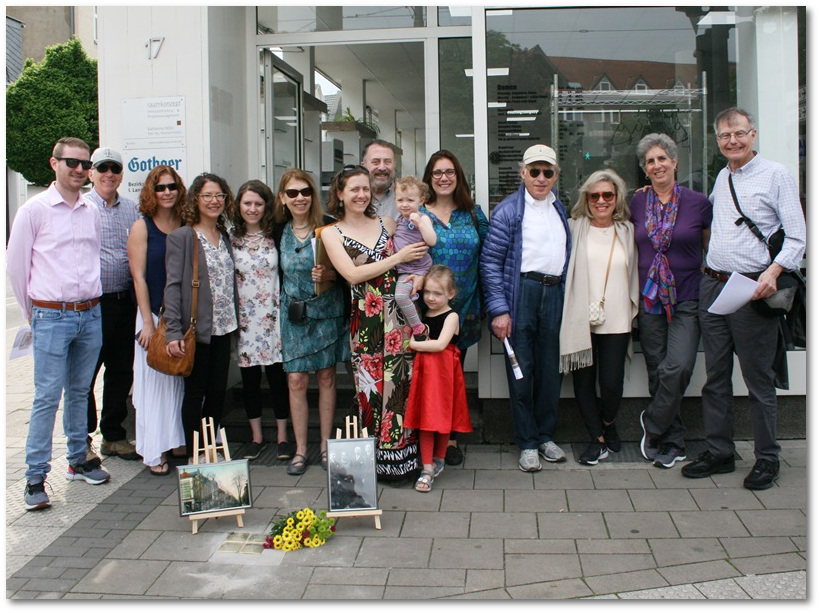
Miriam Zimmermann's speech on the occasion of the installation of the stones of remembrance (Stolpersteine) in Horster Straße 17 in Gelsenkirchen-Buer:
"I am happy to be here, in front of the building, that has been the home for my father a long time ago. First of all I want to thank the artist Gunter Demnig for his vision and creativity in commemoration of families like mine, not only in Germany but everywhere throughout Europe and South America. I also want to mention Andreas Jordan to whom I am extremely grateful for the documentation of the life story of the Löwenstein family, arranging for this installation and for all his answers to my e-mails.
My name is Miriam Löwenstein Zimmerman, I am the daughter of Werner Leo Löwenstein and the niece of Kurt Löwenstein. Mr. Demnigs vision comprises „ a human being, a stone, a name“. In this sense I want to introduce you to the family that has been living here, and whose names are engraved in the four stones of remembrance (memorial stones called Stolpersteine). From left to right: Werner, my father, Berta and David, his parents, and his elder brother Kurt.
Now I want to introduce all members of the Löwenstein family being here today by their names: Kurt' s sons Mark and Michael. Their blessed mother, Gustel Zwecher Löwenstein was also born in Buer, (plesase see the Stolpersteine for the Zwecher family very close just across the street). Also present are Linda Löwenstein, Mark's wife, and Michael's daughters Leah and Marsha Löwenstein, Kurt's and Gustel's granddaughters. I am here together with my husband, Richard Zimmerman and our two daughters Rebecca Goodman and Leah Sharp as well as with Leah's daughters Ziva and Maya. They are the great-granddaughters of my father, Werner Löwenstein, and great-great-granddaughters of David and Berta Löwenstein, whose last address was Horster Straße 17.
We all have come here to celebrate what we call a festival of life before and after National Socialism. At the time Horster Straße used to be a shopping street and number 17 was a 3 storey commercial building and it still is. I am happy and relieved that it does not accommodate any MacDonalds or Subway. The haberdashery owned by the family was in the ground floor. The family lived above the shop in the first floor. My grandmother and my grandfather made their living by dealing in mainly hats and ties. On the second floor was the attic, serving as a sort of storage room, and which granny used to put up her washing during the winterseason. In all those times David and Berta worked hard, hence why they could afford to finance Kurt's and Werner's studies – law in one case and medical study in the other. In those days, in the early thirties, a rigorous quota system made it nearly impossible for jews to study at German universities. Both Löwenstein sons must have had a very good school performance, so that they got the necessary admission to a professional education.
My father used to tell us about him as a pupil when his classmates elected him as the final speaker of his Abitur class. And he would add : „I was the only Jew in my class, so I was not elected by the Jewish vote.“ My father also described how people changed from one day to the other, after Hitler seized power. In a market town, like Buer at that time, everybody knew everybody. When meeting people in the street that he had been knowing all his life, they would cross the street in order to avoid him.Thanks to the support of a remote relative in the States, Ida Schott, my father could leave Germany in 1937.
He settled in the market town of Terre Haute in the Federal State of Indiana, where my sister Ruth, my brother Paul and I were born and brought up. When my father, my sister and I came to visit Buer in the early eighties, I was startled how similar Buer and Terre Haute are. In both cities lives a species of kind and friendly people who seem to have some more time than the always busy people in big cities.
In the meantime, many members of the Löwenstein family have regained their German citizenship. My daughter Leah and her family are living in Munich nowadays and brings our family back to Germany."
(By Miriam Zimmerman, Ed.D.)
|
Translated by Claudia Thul, Gelsenkirchen, 21.06.2018
Setting of the Stolpersteine for the Löwenstein family, article in the local press (WAZ):
→ Geschichtsunterricht auf dem Bürgersteig
|